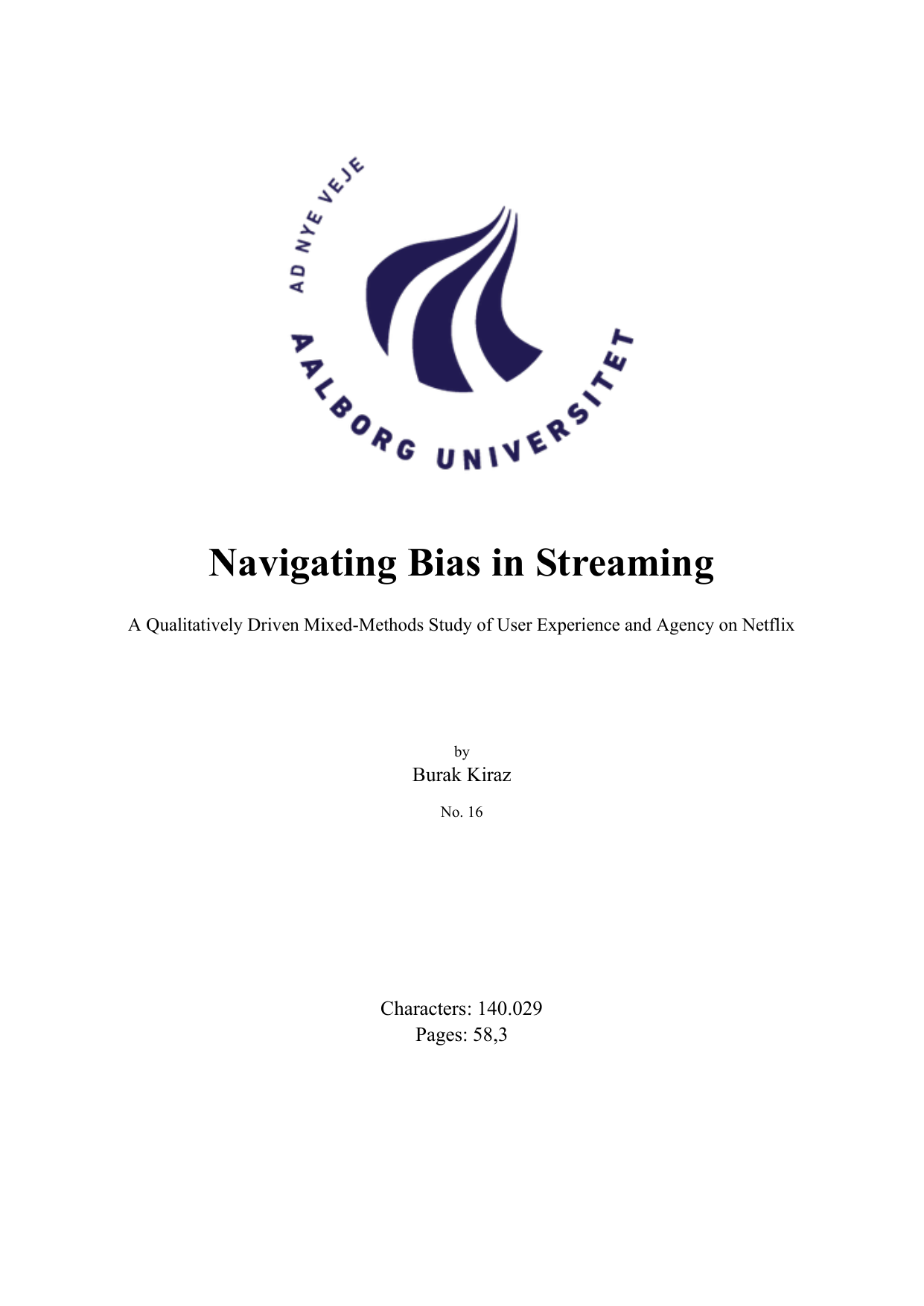
Navigating Bias in Streaming: A Qualitatively Driven Mixed-Methods Study of User Experience and Agency on Netflix
Author
Term
4. term
Publication year
2025
Submitted on
2025-06-01
Abstract
This thesis investigates the impact of algorithmic and user-driven biases in Netflix's recommen-dation system on the user experience and autonomy in content exploration. With a pragmatic approach and a qualitatively driven mixed-methods study, the study combines three methods: bias mapping of Netflix's UI, a 10-day diary study, and semi-structured interviews conducted before and after the diary study period. The thesis identifies algorithmic biases, such as popularity, engagement, and positioning bias, which structurally favor a specific type of content, thereby limiting users' ability to discov-er new content. At the same time, cognitive and behavioral user biases, such as confirmation bias, choice overload, and trust in algorithms, contribute to reinforcing patterns in Netflix's de-cision-making processes. These biases interact with the UI's design choices, creating a user experience that strikes a balance between comfort and control. The results show that users tend to passively navigate the interface, which autoplay-feature and visual hierarchies contribute to, as it prioritizes the platform's productions. Although users ap-preciate the system's personalization logic, many feel a lack of autonomy and variety. The diary study and interviews reveal that emotional and situational factors significantly influence these user patterns. In conclusion, designing recommendation systems should focus on transparency, user control, and diversity in content presentation. Recommendation systems should support higher levels of user involvement and personalization without compromising freedom of discovery and critical reflection.
Documents
